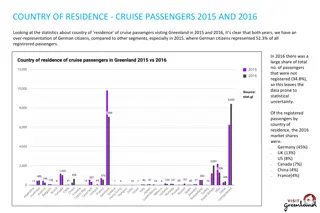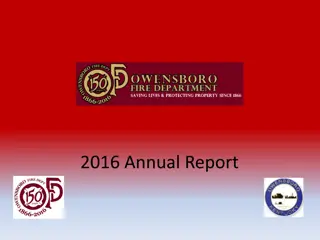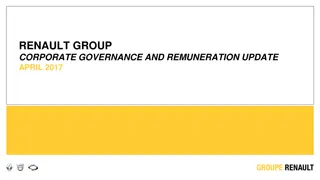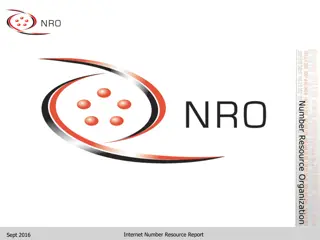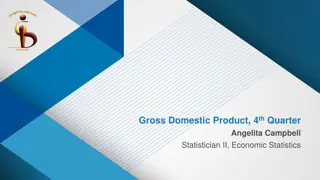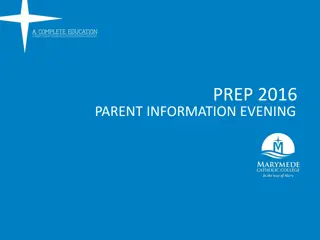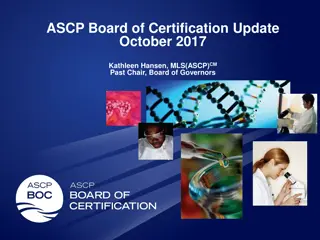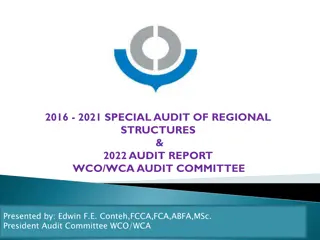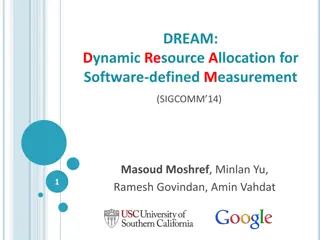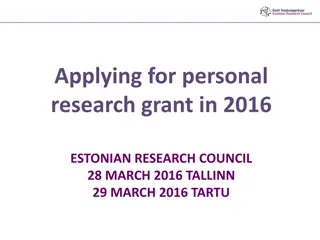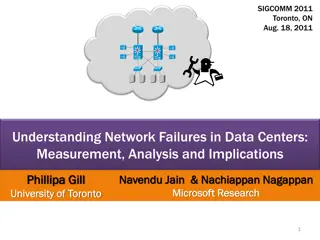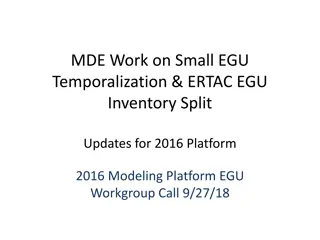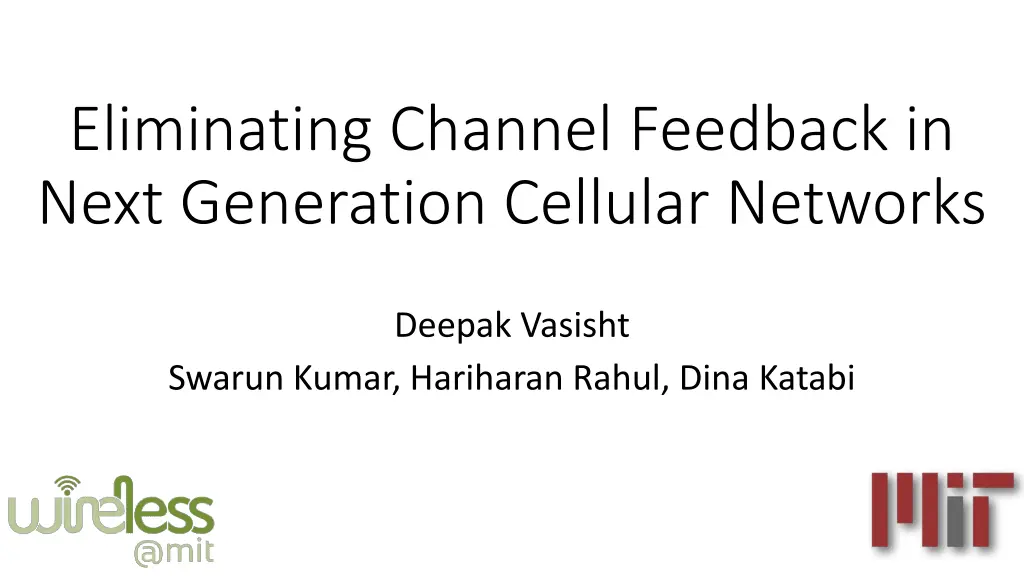
Innovative Channel Estimation Techniques for Next-Gen Cellular Networks
Explore cutting-edge solutions to tackle the challenge of channel feedback in upcoming cellular networks. Learn about advanced antenna technologies, feedback reduction strategies, and the revolutionary R2F2 approach for efficient channel estimation. Discover how reciprocity principles like in WiFi are applied, and delve into the intriguing problem of estimating channels across different frequencies.
Download Presentation

Please find below an Image/Link to download the presentation.
The content on the website is provided AS IS for your information and personal use only. It may not be sold, licensed, or shared on other websites without obtaining consent from the author. If you encounter any issues during the download, it is possible that the publisher has removed the file from their server.
You are allowed to download the files provided on this website for personal or commercial use, subject to the condition that they are used lawfully. All files are the property of their respective owners.
The content on the website is provided AS IS for your information and personal use only. It may not be sold, licensed, or shared on other websites without obtaining consent from the author.
E N D
Presentation Transcript
Eliminating Channel Feedback in Next Generation Cellular Networks Deepak Vasisht Swarun Kumar, Hariharan Rahul, Dina Katabi
Cellular Traffic is Increasing Global mobile data traffic will increase 8 fold in 2015-2020 CISCO 30 (Exabytes/month) Data Demand Spectrum cannot accommodate this increase 20 10 0 2015 2016 2017 2018 2019 2020
More Antennas LTE standard body, 3GPP, is proposing multi-antenna solutions in new releases: Beamforming Coordinated Multi-point Full-Dimensional MIMO Base station needs to know channels to client
Channel Acquisition Use feedback from the client Feedback overhead is overwhelming
Feedback is Overwhelming Large in current networks, uses lossy compression [3GPP TS 36.211 2010, Irmer et al IEEE Communications 2011] Prohibitive for future deployments with up to 32 antennas According to LTE standard body, 3GPP: Identifying the potential issues of CSI acquisition and developing the proper solutions are of great importance
R2F2 Uses uplink channels to estimate downlink channels Removes feedback overhead Evaluated indoors and outdoors in white spaces Commercial Carriers R2F2 testbed 640 660 680 700 720 740 Frequency (MHz)
Idea: Use Reciprocity Like in WiFi In WiFi, Uplink Channel = Downlink Channel
Idea: Use Reciprocity Like in WiFi In WiFi, Uplink Channel = Downlink Channel Does not work for cellular networks: Uplink and downlink on different frequencies
Problem Statement How do we estimate channels on one frequency from channels on a different frequency?
Problem Statement Uplink Channels at Frequency 1 Downlink Channels at Frequency 2
Idea: Same Paths on Uplink & Downlink Uplink Channels at Frequency 1 Paths along which signal is received Downlink Channels at Frequency 2
RF-based Localization Systems 600 ??? User ? Base Station
RF-based Localization Systems 650 ??? 600 ??? User ? Localization systems don t directly apply Base Station
Idea: Same Paths on Uplink & Downlink Uplink Channels at Frequency 1 Paths along which signal is received Downlink Channels at Frequency 2
Paths to Channels: Ideal Representation User ?1 ?2 ?1 Base Station
Paths to Channels: Measured Representation ??(?1,?1,?1) Limited number of antennas leads to convolution with sinc User ?1 ??(?2,?2,?2) ?2 ?1 Base Station
Paths to Channels: Superposition ???1,?1,?1 + ??(?2,?2,?2) User ?1 Base Station
Paths to Channels: FFT ???(???1,?1,?1 + ??(?2,?2,?2)) User 1 ?1 Base Station
Uplink to Downlink Channels Uplink (f) User 1 ?1 2 Base Station Downlink (f )
Uplink to Downlink Channels Uplink (f) User ? 1 ? ?1 2 Base Station Downlink (f )
Channels to Paths Uplink (f) User 1 Goal: To find a set of paths, that can produce channels 1 ?1 Recall: Each path is represented by (?,?,?) Base Station
Channels to Paths Uplink (f) User 1 ?, that can produce channels 1 Goal: To find {??,??,??}?=1 ?1 Recall: Each path is represented by (?,?,?) Base Station
Channels to Paths ?, that can produce channels 1 Goal: To find {??,??,??}?=1 ? ???= ??? ????,??,?? ?=1 2 ?= ??????{??,??,??} 1 ??? {??,??,??}?=1
Getting Paths from Wireless Channels Optimization is non-linear and constrained Solved using standard interior point method Approximate initialization using RF-localization methods
Uplink to Downlink Channels Uplink (f) User 1 ?1 2 Base Station Downlink (f )
Evaluation Goal: To measure the accuracy of R2F2 channel estimates
Experimental Setup Used USRP N210 software radios as clients and base stations Implemented a 5 antenna LTE base station Located base station close to a commercial base station
Frequency Separation Used frequencies from 640 to 690 MHz in the White Spaces Evaluation at 30 MHz Uplink-Downlink separation Same as major AT&T and Verizon deployments Commercial Carriers R2F2 testbed 640 660 680 700 720 740 Frequency (MHz)
Indoor Testbed 100 m Base Station Client 50 m
Outdoor Testbed 80 m Base Station Client 60 m
Beamforming Comparison 1 0.8 0.6 CDF No Beam Ground Truth (Explicit Feedback) R2F2 0.4 0.2 R2F2 delivers 90% of the MIMO SNR gains, with zero feedback 0 SNR (dB) -5 5 15 25
Beamforming Comparison: Data Rate 1 0.8 0.6 CDF No Beam 0.4 Ground Truth R2F2 0.2 Datarate (Mbps) R2F2 s achieves 1.7x data rate improvement 0 0 10 20 30 40 50 60
Comparison with RF-localization 1 0.8 0.6 CDF 0.4 No Beam Ground Truth R2F2 RF-Loc 0.2 SNR (dB) 0 Delivers only 40% of MIMO SNR gains -5 5 15 25
Effect of Frequency Separation 8 7 6 SNR Gain (dB) 5 4 3 2 1 0 0 10 20 30 40 50 Frequency Separation (MHz)
Application: Edge Client Nulling Client 2 BS 1 BS 2 Client 1
Edge Nulling 1 0.8 0.6 5. 3 dB CDF Original 0.4 After Nulling 0.2 0 -5 0 5 10 15 INR(dB)
Related Work Cellular Networks: Channel feedback compression [Shuang et al VTC 11, Rao et al 14, Xu et al Access IEEE 14], Statistical channel prediction across frequency bands [Han et al CHINACOM 10, Hugl et al COST 02 ] Beyond Cellular Networks: Channel quality prediction [Sen et al Mobicom 13, Shi et al NSDI 14, Radunovic et al CONEXT 11 ], Temporal channel predictions [Cao et al PMRC 04, Wong et al GLOBECOM 05, Dong et al GLOBECOM 01]
Conclusion R2F2 estimates channels on one frequency from channels on a different frequency R2F2 accurately estimates downlink LTE channels from uplink LTE channels R2F2 enables MIMO techniques for FDD systems with zero channel feedback

